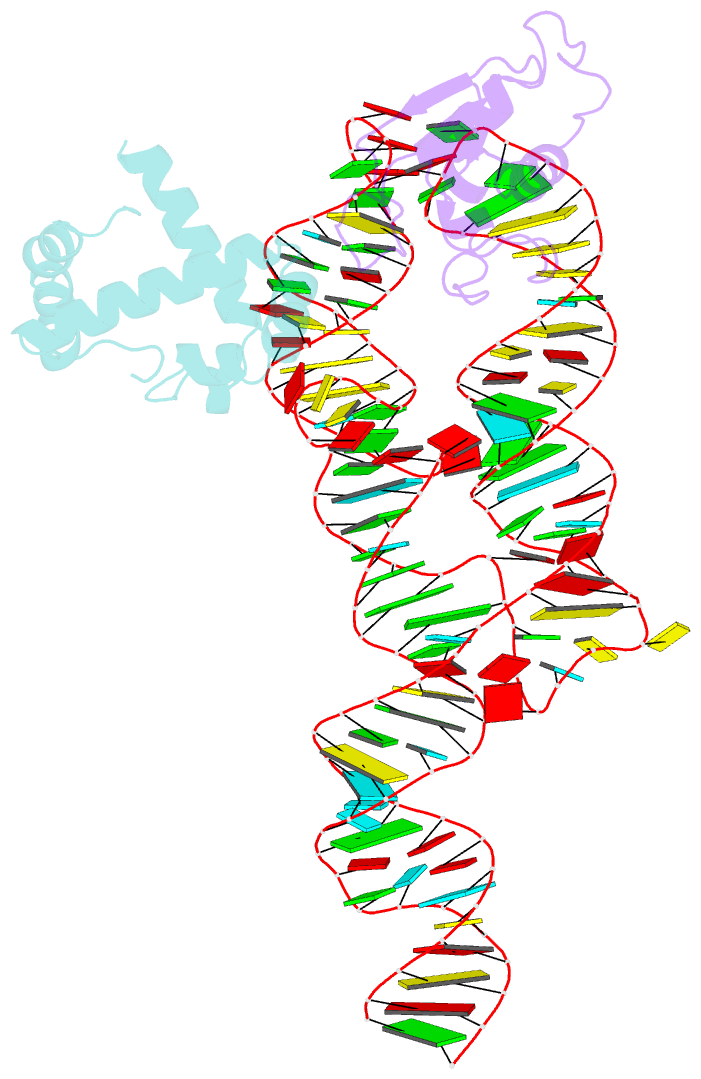Summary information and primary citation
- PDB-id
- 1mfq; SNAP-derived features in text and JSON formats;
DNAproDB
- Class
- signaling protein-RNA
- Method
- X-ray (3.1 Å)
- Summary
- Crystal structure analysis of a ternary s-domain complex of human signal recognition particle
- Reference
- Kuglstatter A, Oubridge C, Nagai K (2002): "Induced structural changes of 7SL RNA during the assembly of human
signal recognition particle." Nat.Struct.Biol., 9, 740-744. doi: 10.1038/nsb843.
- Abstract
- The eukaryotic signal recognition particle (SRP) is a cytoplasmic ribonucleoprotein particle that targets secretory and membrane proteins to the endoplasmic reticulum. The binding of SRP54 to the S domain of 7SL RNA is highly dependent on SRP19. Here we present the crystal structure of a human SRP ternary complex consisting of SRP19, the M domain of SRP54 and the S domain of 7SL RNA. Upon binding of the M domain of SRP54 to the 7SL RNA-SRP19 complex, the asymmetric loop of helix 8 in 7SL RNA collapses. The bases of the four nucleotides in the long strand of the asymmetric loop continuously stack and interact with the M domain, whereas the two adenines in the short strand flip out and form two A-minor motifs with helix 6. This stabilizing interaction is only possible when helix 6 has been positioned parallel to helix 8 by the prior binding of SRP19 to the tetraloops of helices 6 and 8. Hence, the crystal structure of the ternary complex suggests why SRP19 is necessary for the stable binding of SRP54 to the S domain RNA.





